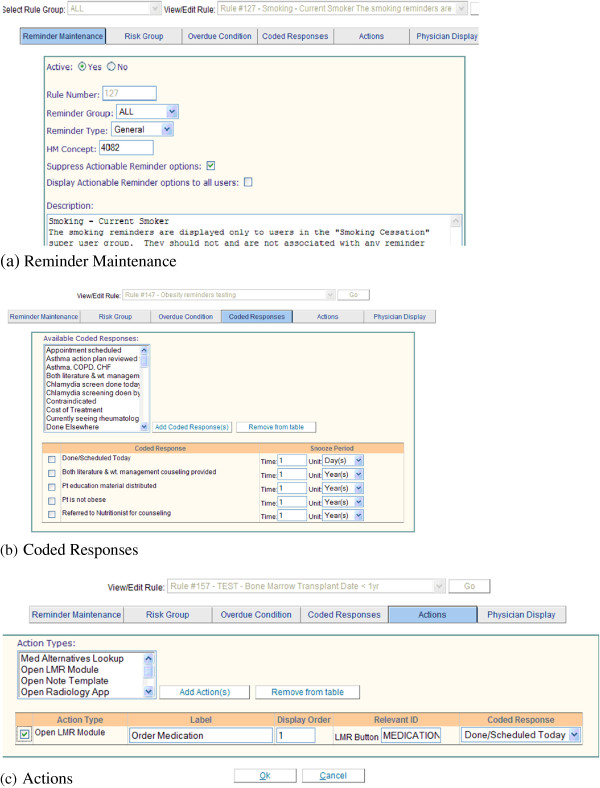Figure 2.
Reminder Editor. The Reminder Editor allows users to add a new rule or view/edit existing rules. It has six tabs and this figure includes screen shots of three of the six tabs of the Editor. 1) Reminder Maintenance (Figure 2a) records the metadata and a description of a rule. 2) The Risk Group tab defines specific risk group primitives (such as age, allergy, and disease). 3) Overdue Condition evaluates the most recent data of a test (e.g., Hemoglobin A1c) performed on the patient and determines if the test is due or overdue. 4) Coded Reponses (Figure 2b) are predefined clinician recommendations or actions to be linked to the reminder. Each coded response may have a snooze period associated with it. Snooze periods allow the clinician to defer the follow-up actions for a period of time. 5) Actions (Figure 2c) are commands that will automatically open other system modules or places within LMR. This will allow the clinician to easily implement a coded response reminder recommendation for orders, medications, radiology tests, and so on. 6) Physician Display defines the exact reminder message to be displayed in the patient’s electronic medical records and also defines references (e.g., guidelines) for this reminder.

